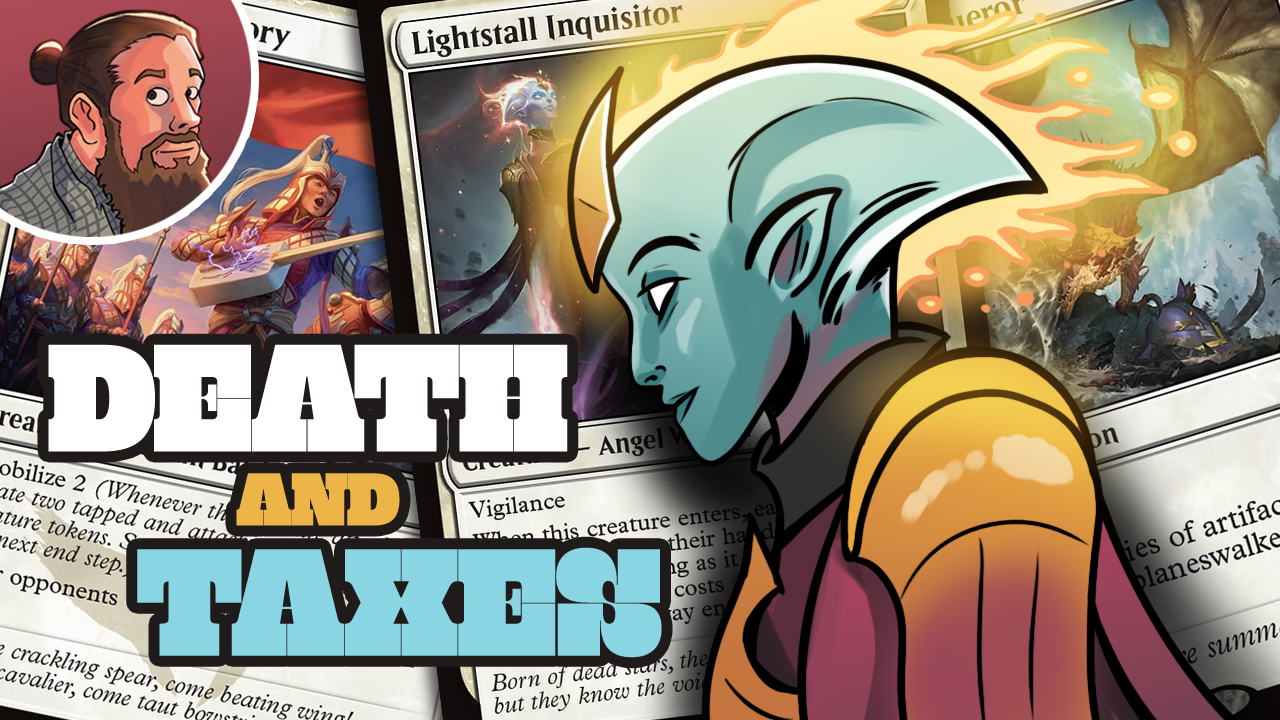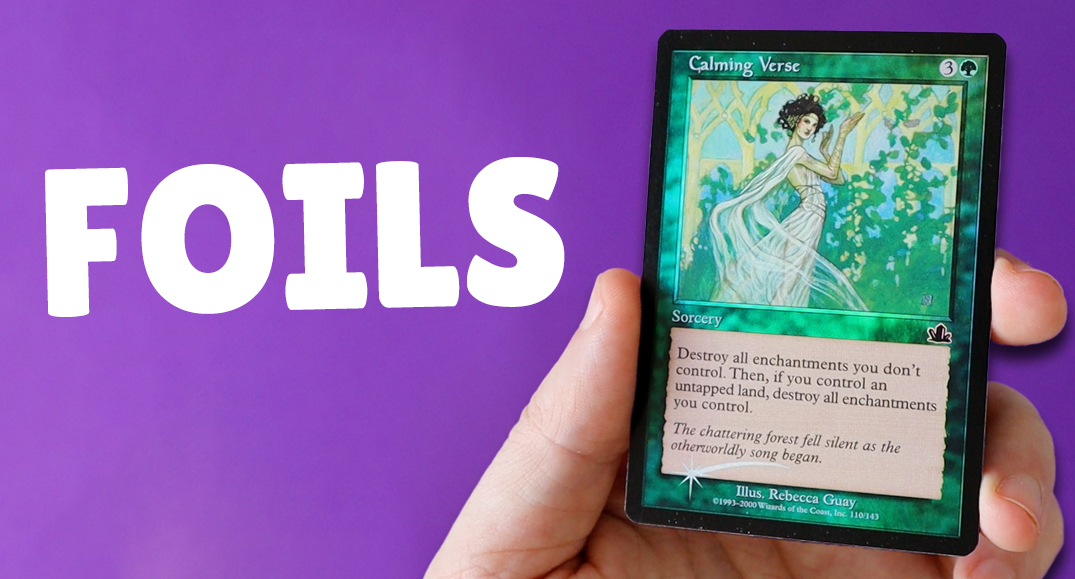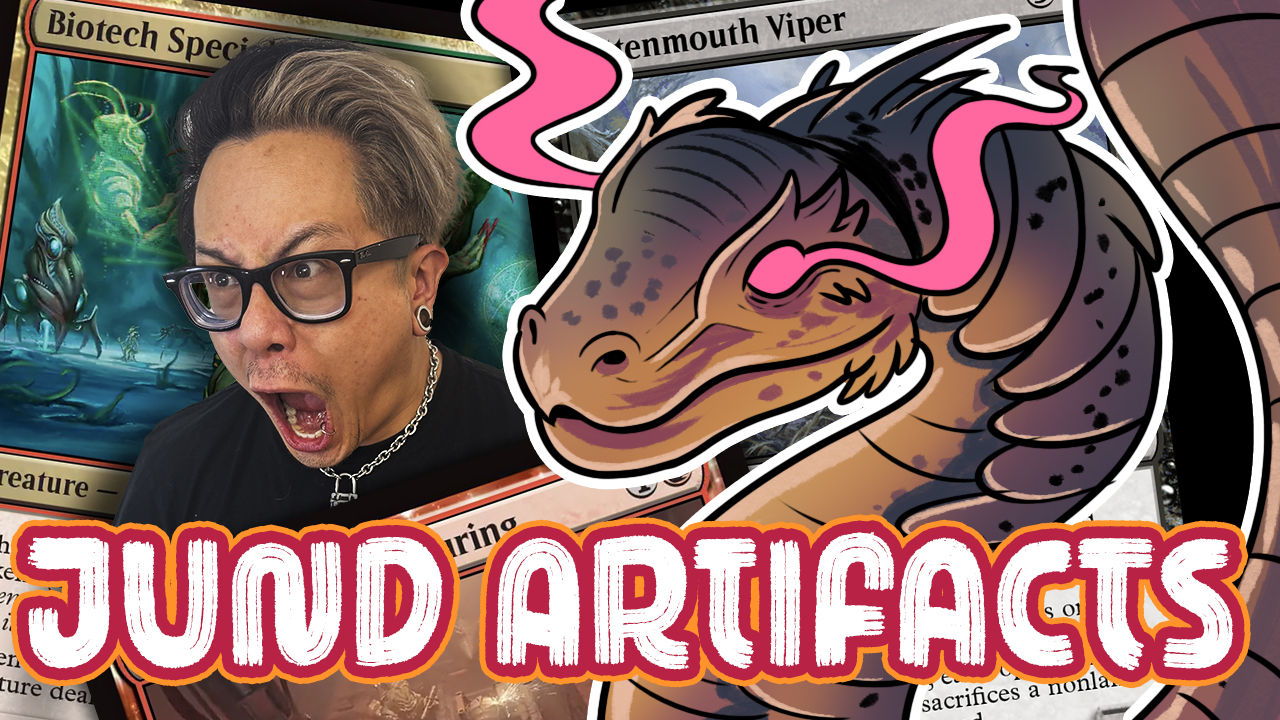The Steps to Making (and Vetting) a "Call"
Today I was planning on writing an article about the recent Modern spikes and some Modern cards that I think have potential to increase in price over the Summer PTQ season. Unfortunately, I made the mistake of tweeting about Raging Ravine as I was writing and caused a bit of a frenzy on social media, and according to some people, spurred a buyout.

For those of you who have been following my writing for a while, you'll know that I have very little interest in creating a frenzy or a buyout. For me, MTG finance is mostly about the grind of buying and reselling collections. Since I typically don't speculate on cards, and even more rarely the cards I write about (and if I do, I always make it clear that I have/am buying copies), seeing a card double or triple in price doesn't benefit me personally.
You also know that I love digging into data and numbers. While it might sound silly, using the data to figure out which cards are likely to increase in price — even when I don't actually buy these cards — feels like a victory and gives me a sense of satisfaction.
At the same time, apart from entertainment, the overarching goal of my writing is to help make Magic less expensive for the typical player. Whether this means buying and reselling cards to support your habit, buying and selling at the right time to grow your collection, or simply putting together your deck for the cheapest price possible, it really makes no difference; Magic is an expensive hobby and one of the best ways to minimize the cost is by paying attention to the financial aspect of the game.
The problem is if I write about a list of Modern cards that I think the data suggests are underpriced, some number of people are going to go out and buy those cards which subsequently makes the cards more expensive. I know this all two well not only from Raging Ravine, but from doing the Budget Magic series. When I happen to find a deck you all really enjoy and want to play, some of you go out and buy it and the price goes up.
I also realize that some of this is unavoidable. I have yet to figure out a way to tell you guys and gals about cards I believe are undervalued while also keeping people from buying these cards and driving up the price (if you have any suggestions, I'm all ears). The best I've come up with so far is refraining from directly telling people to buy specific cards while still presenting the data.
Anyway, instead of focusing on specific cards today, I'm going to let you behind the curtain and give you a look at my process for making a "call" (i.e. choosing a card that I expect to increase in price). Hopefully this knowledge will be beneficial in two ways. First, it will give you the ability to do your own research on individual cards and decide for yourself whether or not you should buy in. Second, it will give you the ability to sift through the massive amount of information that's out there. Did you come across something on Reddit? See a Tweet? Read an article? Instead of just taking the expert's opinion, knowing how to interpret the data for yourself allows you to vet the information and alleviates the tendency to take the words of "experts" as gospel truth.
Step One: Dig Through Time the Info
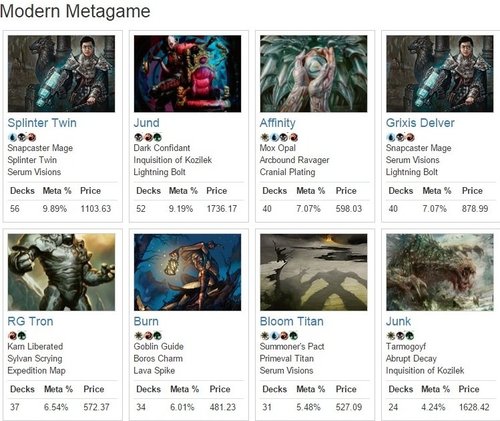
For me, most "calls" start from simply browsing through the metagame, decklists from recent events, and the lists of format staples. Mostly I'm looking for changes either in the metagame or within the decks themselves.
For instance, Jund has recently switched places with Abzan and jumped to the top of the Modern metagame. Thus Siege Rhino and Lingering Souls are a bit less interesting at the moment, while the red cards from Jund like Huntmaster of the Fells, Olivia Voldaren, and Kolaghan's Command have all spiked in recent days.
Kolaghan's Command is an interesting one because it floated just below the surface (for instance on various Twitch streams, especially Gerry Thompson's) for quite a while before breaking out. This illuminates the importance of all the different mediums for getting information. While I'm hesitant to actually purchase a card because I read about it on Reddit or Twitter, or see some pro streaming with it, these are great jumping off points for further research.
It's obvious that Jund is a deck on the rise. It performed well this weekend at the SCG Invitational (and got some camera time, which is more important than you might thing), it has the support of several high level pros, the raw numbers (percentage of the meta) show an increase in play, and the recent price spikes suggest that some people are buying these cards. All of this combined leads me to investigate the deck further by breaking down some of the lists to see what else in the deck might be undervalued at the moment.


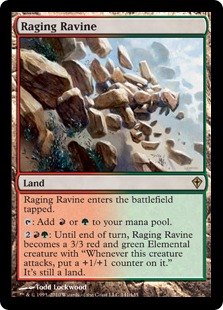
These are the three cards that interest me enough to open up the price chart and at least look at the numbers. I quickly cross Maelstrom Pulse off the list mostly because it doesn't seem to be in line for an increase in play. Abzan decks can play the GB spell just as easily as Jund, and it isn't like GBx as a color combination has suddenly become more popular; it's just that the splash color has changed (again).
Fulminator Mage is more interesting considering it is buylisting for $12 with a spread of 14 percent. In fact, some recent completed listings on eBay have closed for below buylist prices and the TCG-low has ticked up over the past couple days. Apart from the numbers, I can see both upside and downside in Fulminator Mage. Obviously, the biggest downside to Fulminator Mage is that it was just reprinted at rare in Modern Masters 2015, so the supply has increased significantly over the past month. While I would normally stay away from a card that is just hitting peak supply, there are certainly exceptions to this general rule. Unfortunately, it also suffers from the same problem as Maelstrom Pulse in that it has already been seeing heavy play in Abzan lists.
On the other hand, the main positive of Fulminator Mage is that the decks Fulminator Mage is good against are performing well and may even be the decks to beat this PTQ season. Of course I'm talking about Tron and Amulet Bloom, which can be difficult matchups for fair midrange decks without the help of Fulminator Mage hitting a bounceland or tron piece. As a result, it seems unlikely that its play will decline in the near future. In fact, the idea of running a copy or two in the maindeck isn't completely absurd (although probably still too greedy).
All in all, it's hard for me to see Fulminator Mage having a massive spike; the supply is simply too high at the moment. While I expect it to creep up over the summer, it's not something that's a major rush which means there is no need to make a "call." If you want copies for your deck, it is probably a fine idea to pick them up now regardless. So this leaves us with Raging Ravine.
Raging Ravine hit pretty much all the marks I was looking for in a card from the Jund deck. Although it is technically colorless, for all intents and purposes, it's a red card. This means the shift from Abzan to Jund suggests it should see significantly more play (same with Olivia Voldaren and Huntmaster of the Fells). It is also (often) a four-of in the deck, and it seems likely that this will become the stock number in the future if Jund players start running Ghost Quarters to further fight Tron and Amulet Bloom. If you're not running any/many colorless lands (i.e. Ghost Quarter or Tectonic Edge), Treetop Village is the real competition for the manland slot in the deck. But if people start upping the colorless land count, Raging Ravine is basically an auto four-of because while it is more expensive to activate, it is a far better mana fixer than Treetop Village.
Once you dig through the lists and — using some combination of knowledge, experience, and your gut — come across a card that it interesting, the next step is to move beyond this subjective assessment and look at the cold hard numbers.
Step Two: The Spread and Buylist Prices
This is typically my next step down the road to making a call. Neither metric is conclusive on their own, but both provide signals. A poor spread and low-buylist prices is negative, while a solid spread and high buy prices are a positive, but ultimately changes in these signals are the most important thing.
For Raging Ravine in specific, the spread is solid at 22 percent and the best buylist price is $3. More important, however, is the fact that buylist prices have been increasing in recent weeks (and as a result the spread has been dropping). As recently as a week ago, ChannelFireball was only paying $1 for Raging Ravine. Over the past several days they bumped their buy prices twice; first to $2 on the June 9th, then again today (the 11th) to $3. This suggests there is demand for the card — enough demand that CFB is willing to pay you three times as much today as they were a week ago.
Step Three: Examine Supply
Here we are looking to answer three questions: do major vendors have the card in stock and if so, how many copies and at what price? As far as potential price increases, a low supply is good. This means that it doesn't take that many people buying a play set (or one speculator spending a few hundred dollars) to wipe the market clean. Personally I tend to focus exclusively on near mint copies. While buying played copies are fine if you are building a deck, they are harder to sell and typically have a worse spread since buyers deduce a percentage based on condition. Here's what I saw for Raging Ravine.
| Vendor | Supply | Price | Total |
| TCG-Player | 28 | $4.55 | $127.40 |
| ABU | 1 | $6.49 | $6.49 |
| ChannelFireball | 4 | $5.99 | $23.96 |
| StarCity | 0 | 0 | 0 |
| CardKingdom | 0 | 0 | 0 |
| CCG House | 2 | $4.99 | $9.98 |
| TrollandToad | 1 | $2.99 | $2.99 |
| HotSauceGames | 0 | 0 | 0 |
| AdventuresOn | 0 | 0 | 0 |
| eBay | 9 | $5.89 | $53.01 |
| Amazon | 5 | 5.99 | $29.95 |
| Totals | 50 | n/a | $233.78 |
That's right, for less than $250 you could "buy out" all of the major vendors (including eBay and Amazon) of near mint copies of Raging Ravine. This means two things: First, a speculator with a relatively small amount of money could, with a few clicks, double or triple the price of Raging Ravine. Whether or not this price sticks depends on how much demand there is for the card at the new price point. This is how you get price charts showing Oblivion Stone going from $15 to $70 in one day. There are enough people out there investing in MTG finance that having one person buy out the market isn't that much of a stretch. And this doesn't even consider the fact that a deep pocketed vendor could buy a significant number of copies if they wanted to.
Second, putting aside the possibility of one person or vendor buying out the market, 50 NM copies means that it only takes 12 players (out of the 13 million Magic player worldwide) to buy a playset to wipe out the supply of major vendors. As such, it's very possible that this happens organically. We have GP Charlotte coming up this weekend, and out of the thousands of players, isn't it possible (or even likely) that 12 people decide to switch from Abzan to Jund based on recent results and need a set of Raging Ravines to finish their deck?
Acard being in low supply increases the likelihood of a major price spike. For cards in high supply, it is less likely for a single person (or group of players) to move the market by diminishing supply. Fulminator Mage, for example, has 144 sellers on TCGPlayer alone, many of these with multiple copies. For the supply to dry up on Fulminator Mage, some person or combination of people would have to spend over $5,000, and this only buys out the copies on TCGPlayer.
Step Four: Comparable Cards
This is where things start to get a bit meta again since Magic is a game with so many moving pieces and the power level (and playability) of any individual card is highly dependent on other card cards. As a result, we can learn a lot about a card's potential by examining similar cards. Sometimes this is difficult and requires a good bit of guessing and assumptions (for instance, what is a good comparison for Tarmogoyf or Cryptic Command?), while other times it is fairly simple. Thankfully, Raging Ravine is one of the easy ones since it was printed as part of a cycle.
Some things to keep in mind when making these comparisons:
- Level of supply: You don't want to compare Dark Depths, a card from the notoriously low-supply Coldsnap, with Thespian Stage, a card from a recent high-supply set even though they might see a similar level of play. Along the same lines, you typically don't want to compare cards across rarities (i.e. a mythic with an uncommon) because the level of supply is much different.
- Reprintings: While the Praetors from New Phyrexia seem like easy comparisons since they are from the same set and of the same rarity, Elesh Norn, Grand Cenobite showing up in MM2 and Sheoldred, Whispering One being a prerelease promo throws this comparison off.
- Level-of-play: Don't compare a Top 50 card in Modern with an unplayed card even if they are from the same set or even the same cycle. Also, don't compare Standard staples with Legacy/Modern staples.
Raging Ravine is part of the Worldwake manland cycle which are surprisingly easy to compare with each other. All are from the same set and of the same rarity. Only one has a second printing (the buy-a-box promo Celestial Colonnade), and all (with the possible exception of Lavaclaw Reaches) are Modern playable (although their level of play varies based on the meta.) Anyway, here is a very simple comparison of the cycle.
| Card | Rank (in Top 50, Modern) | Dominance | Spread | Price |
| Raging Ravine | 18 | 9.28 | 22% | $4.31 |
| Celestial Colonnade | 41 | 4.45 | 31% | $18.22 |
| Creeping Tar Pit | n/a | n/a | 33% | $21.29 |
| Stirring Wildwood | n/a | n/a | 49% | $4.01 |
| Lavaclaw Reaches | n/a | n/a | 62% | $1.37 |
A few things of note here. First, Raging Ravine is — by far — the most played manland in Modern, and it's not particularly close. The bottom three don't even make the list of Top 50 lands in Modern and Celestial Colonnade (second on the list) only sees about half as much play as Raging Ravine. Second, even in comparison with the other members of the cycle, the spread on Raging Ravine is abnormally low. The high spreads on Stirring Wildwood and Lavaclaw Reaches suggest they don't have much demand, while Celestial Colonnade and Creeping Tar Pit have typical spreads for format staples. Third, it is unsurprising that the blue lands are the most expensive; this is typical of land cycles, so it's probably asking too much for Raging Ravine to equal their price. Fourth, Creeping Tar Pit is the only Legacy playable card in the bunch (mostly thanks to its efficiency as an unblockable Jace, the Mind Sculptor assassin) and this helps explain why it is the most expensive even though it isn't currently seeing much play in Modern. Maybe the most interesting comparison is Stirring Wildwood which is the closest in price to Raging Ravine. Should the 18th most played land in Modern (and a four-of in a rising deck) have basically the same price as the relatively unplayed Stirring Wildwood? To me, the answer is no.
Step Five: Consider Mitigating Factors
This is a pretty broad category which includes pretty much anything else and is also a sort of final double-check before actually making the call. Before you actually buy a card (or post on reddit or twitter), it is a good idea to look over everything one more time before clicking submit. Has there been a shift in the meta you aren't thinking about? What about a B&R announcement? How about some odd promo printing that might have slipped your mind, or a duel deck or commander reprint?
Basically, look for a reason — any reason — to change your mind. Play devil's advocate; try to convince yourself that Raging Ravine (or whatever card you are researching) is not a wise purchase. If the card makes it over this final step, then and only then do you place your order or send your tweet. I'd rather be conservative in my "calls" than gain a reputation as someone who over-hypes cards for no good reason. Behaving in this cautious manner isn't only good for your reputation, it's also good for your wallet.
Remember, you never lose money by not buying a card, so when in doubt, I believe it is better to take a pass than to take on additional and potentially misguided risk.
Conclusion
Anyway, that's all for today. Hopefully this discussion will not only help conduct your own research and make your own calls on which cards to buy, but also provide a simple step-by-step process to doubling-checking the calls you see others make. As always, leave your thoughts, feelings, and opinions in the comments, and you can reach me on Twitter (or MTGO) @SaffronOlive.


